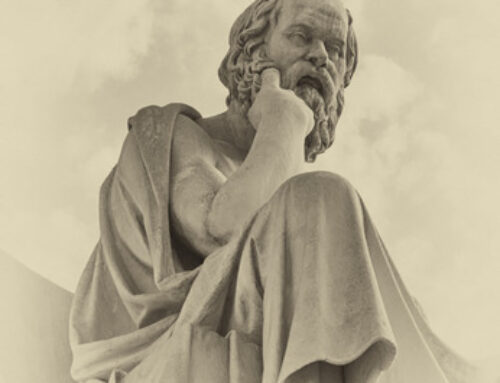 Socialism has been the rage among intellectual elites for a long time. What was different in 2016 was that it had a strong political candidate, Bernie Sanders, who in a fair Democrat campaign would have beaten Hillary Clinton. But the political enthusiasm for Socialism didn’t end with his loss. Instead it grew to the point where it is now the Democrats’ basic ideology. The legion of 2020 presidential candidates who either flirt with it or embrace it wholeheartedly includes Kamala Harris, Kirsten Gillibrand, Corey Booker, Deval Patrick, Sherrod Brown, Elizabeth Warren, and Alexandria Ocasio-Cortez, also known as AOC.
Socialism has been the rage among intellectual elites for a long time. What was different in 2016 was that it had a strong political candidate, Bernie Sanders, who in a fair Democrat campaign would have beaten Hillary Clinton. But the political enthusiasm for Socialism didn’t end with his loss. Instead it grew to the point where it is now the Democrats’ basic ideology. The legion of 2020 presidential candidates who either flirt with it or embrace it wholeheartedly includes Kamala Harris, Kirsten Gillibrand, Corey Booker, Deval Patrick, Sherrod Brown, Elizabeth Warren, and Alexandria Ocasio-Cortez, also known as AOC.
AOC is particularly interesting. On the positive side, she is intelligent, idealistic, and spontaneous, an especially appealing combination in politics, where self-serving puffery, guardedness, and doubletalk are all too common. On the negative side, she tends to speak off the cuff in a way that suggests an unholy marriage of mindless zeal and naiveté. The mindless zeal is shown in her published plan for the nation, a “Green New Deal,”which was so absurd that it was later removed from the Internet. The naiveté is evident in her description of Socialism:
When we talk about the word ‘socialism,’ I think what it really means is just democratic participation in our economic dignity and our economic, social, and racial dignity. It is about direct representation and people actually having power and stake over their economic and social wellness, at the end of the day.
This vacuous definition ignores the crucial distinction between what Socialism promises and what it actually delivers. The two are poles apart. As Mark J. Perry explains, Socialism promises “prosperity, equality, and security” but delivers “poverty, misery, and tyranny.” Perry also explains why Socialism fails so consistently. First, it denies people the incentives they need to work hard. For example, it replaces private property with government ownership that takes away people’s incentive to strive for excellence. Secondly, it runs by centralized bureaucratic planning, which has no way of identifying effective and efficient methods and therefore no recognition and reward system. As a result, workers, managers, and bureaucrats lack the motivation to rise above mediocrity and the entire society becomes dysfunctional.
Perry’s comments are on point, as was the succinct yet penetrating analysis offered by Dr. Adrian Rodgers eighty-odd years ago in 1931:
You cannot legislate the poor into freedom by legislating the wealthy out of freedom. What one person receives without working for, another person must work for without receiving. The government cannot give to anybody anything that the government does not first take from somebody else. When half of the people get the idea that they do not have to work because the other half is going to take care of them, and when the other half gets the idea that it does no good to work because somebody else is going to get what they work for—that, my dear friend is about the end of any nation. You cannot multiply wealth by dividing it.
Nevertheless, despite such perceptive analysis, and despite the unmistakable failure of Socialism to make good on its promises in the Soviet Union, Cuba, Venezuela, China, North Korea and other countries, Socialism has gained in popularity among Democrat politicians and voters, so much so that it could be a determining factor in the 2020 election.
How can this popularity be explained? I believe the main reason is the persistent political bias in American colleges and universities.
Brooklyn College Professor Mitchell Langbert studied the ratio of Democrat to Republican tenure track professors in 51 of the top-ranked 66 liberal arts colleges in the U.S., 8,688 professors in all. The study revealed that 78.2 percent of the academic departments had either ZERO Republicans or “so few as to make no difference.” 1
One division of his data was by each of 24 subject areas. From that division I have selected the subject areas, often called “general education,” that are required for all students regardless of their majors. Here they are, together with the ratios of Democrat (D) to Republican (R) professors:
Literature (48.3 D to 1 R), Philosophy (17.5 D to 1 R), Anthropology (56 D to 0 R), Sociology (43.8 D to 1 R), Psychology (16.8 D to 1 R), History (17.4 D to 1 R), Religious studies (70 D to 1 R), Communications (108 D to 0 R). (No, that last one is not a typographical error)
Langbert’s conclusions include these: that the imbalance to the Left has created a powerful bias in education; that even though more Americans are conservative rather than liberal, “academic psychologists’ biases [lead students] to believe that conservatism is deviant”; that because of these biases, objective research has become difficult if not impossible. Finally, that the lack of balance in the views to which students are subjected is so deeply embedded in higher education that the solution “may lie in establishing new colleges from the ground up, rather than in reforming existing ones.”
I would add that, though the liberal dominance may be more pronounced in elite colleges than in other colleges, it is also strong in the non-elites; and though it may be more openly asserted today than in the past, it has long been present. (I encountered it when I began teaching in 1961.)
To appreciate more fully the relationship between college education and the increasing numbers of socialists in America, look back at that list of subject areas and reflect for a moment on its implications. The most obvious one is that for decades students have had a 17 to 1, 43 to 1, or 56 to 1 chance of encountering liberal bias on every issue, as well as notencountering a conservative view on anyissue.And in the case of the most populated course, Communications, students have had, in many cases, a ZERO chance of encountering a conservative view.
What makes the imbalance worse is that the standard approach to instruction in most disciplines has long been telling students what to think rather than teaching them how to think. Accordingly, students have been discouraged from even considering the possibility that the professor’s views might be flawed and that the conservative views that have been kept from them might be more reasonable.
As if that were not enough, for many years liberal conditioning has been reinforced after college graduation by the mainstream media. (The media, after all, have given AOC unusual exposure.) Such reinforcement has intensified since the advent of Facebook and other social media, some of which have reportedly not only given prominence to liberal ideas but also blocked conservative ideas.
The liberal messages in all those college classrooms and the mainstream and social media did not, at first, advocate Socialism. They merely claimed Capitalism had been a blight on history and today is hopelessly corrupt; that the traditional religious and moral values associated with it are either superstitious or passé, and in either case an obstacle to genuine intellectuality; and that the foundation of the U.S. government, the Constitution, was produced by flawed white and often racist men whose eighteenth century views are inadequate to modern needs.
The constant denigration of America inevitably gave rise to the question, “What, then, should replace our terrible system?” Given that many older liberals could still recall their youthful flirtation with socialistic ideas, it was not surprising that the answer given, and that professors were primed to embrace, was “Socialism.” The professors dutifully proclaimed it and required students to commit it to memory. The students graduated and took up their professions, including education, law, journalism, and government.
One of those individuals, Bernie Sanders, became a United States Senator and a presidential candidate. One of his disciples, Alexandria Occasion-Cortez, was elected to Congress, quickly rose to intellectual leadership of the Democrat party, and has fashioned a platform on which the large and growing crowd of 2020 Democrat presidential candidates are willing to stand, some of them proudly. Despite the intellectual debilitation they acquired in the nation’s elite educational institutions—or perhaps because of it—they already possess great power, and one of them could conceivably become President. If that happens, Socialism will have completed its journey from popularity to conquest.
1 Mitchell Langbert, “Homogenous: The Political Affiliations of Elite Liberal Arts College Faculty,” Academic Questions(2018) 31: 186-97.
© 2019 by Vincent Ryan Ruggiero. All rights reserved


